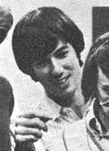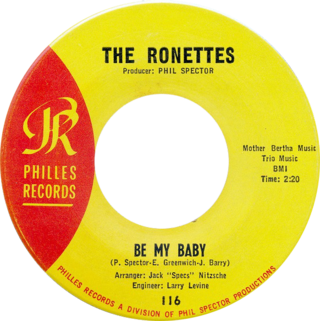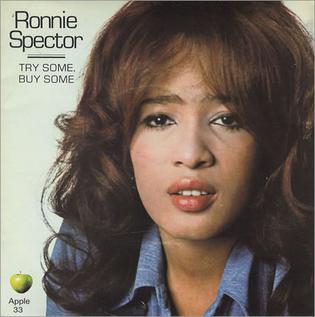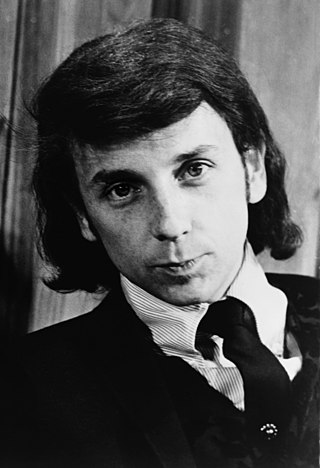
The Righteous Brothers are an American musical duo originally formed by Bill Medley and Bobby Hatfield but now comprising Medley and Bucky Heard. Medley formed the group with Hatfield in 1963. They had first performed together in 1962 in the Los Angeles area as part of a five-member group called the Paramours, and adopted the name The Righteous Brothers when they became a duo. Their most active recording period was in the 1960s and '70s, and, after several years inactive as a duo, Hatfield and Medley reunited in 1981 and continued to perform until Hatfield's death in 2003. The term "blue-eyed soul" is thought to have first been coined by Philadelphia radio DJ Georgie Woods in 1964 when describing the duo's music.

Van Dyke Parks is an American musician, songwriter, arranger, and record producer who has composed various film and television soundtracks. He is best known for his 1967 album Song Cycle and for his collaborations with Brian Wilson and the Beach Boys. In addition to producing or arranging albums by Randy Newman, Harry Nilsson, Phil Ochs, Little Feat, Happy End, Ry Cooder and Joanna Newsom, Parks has worked with performers such as Syd Straw, Ringo Starr, U2, Grizzly Bear, Inara George, Kimbra, Suzy Williams, Bob Dylan and Silverchair.

The Lovin' Spoonful is an American folk-rock band formed in Greenwich Village, New York City, in 1964. The band was among the most popular groups in the United States for a short period in the mid-1960s and their music and image influenced many of the contemporary rock acts of their era. Beginning in July 1965 with their debut single "Do You Believe in Magic", the band had seven consecutive singles reach the Top Ten of the U.S. charts in the eighteen months that followed, including the number-two hits "Daydream" and "Did You Ever Have to Make Up Your Mind?" and the chart-topping "Summer in the City".

The Wall of Sound is a music production formula developed by American record producer Phil Spector at Gold Star Studios, in the 1960s, with assistance from engineer Larry Levine and the conglomerate of session musicians later known as "the Wrecking Crew". The intention was to exploit the possibilities of studio recording to create an unusually dense orchestral aesthetic that came across well through radios and jukeboxes of the era. Spector explained in 1964: "I was looking for a sound, a sound so strong that if the material was not the greatest, the sound would carry the record. It was a case of augmenting, augmenting. It all fit together like a jigsaw."

Death of a Ladies' Man is the fifth studio album by Leonard Cohen, produced and co-written by Phil Spector. The album was in some ways a departure from Cohen's typical minimalist style by using Spector's Wall of Sound recording method, which included ornate arrangements and multiple tracks of instrument overdubs. The album was originally released in the US by Warner Bros., and on CD and the rest of the world by Cohen's long-time label, Columbia Records.

"You've Lost That Lovin' Feelin'" is a song by Phil Spector, Barry Mann, and Cynthia Weil, first recorded in 1964 by the American vocal duo the Righteous Brothers. This version, produced by Spector, is cited by some music critics as the ultimate expression and illustration of his Wall of Sound recording technique. The record was a critical and commercial success on its release, reaching number one in early February 1965 in both the United States and the United Kingdom. The single ranked No. 5 in Billboard's year-end Top 100 of 1965 Hot 100 hits – based on combined airplay and sales, and not including three charted weeks in December 1964 – and has entered the UK Top Ten on three occasions.

"River Deep – Mountain High" is a song by Ike & Tina Turner released on Philles Records as the title track to their 1966 studio album. Produced by Phil Spector and written by Spector, Jeff Barry and Ellie Greenwich. Rolling Stone ranked "River Deep – Mountain High" No. 33 on their list of the 500 Greatest Songs of All Time. NME ranked it No. 37 on their list of the 500 Greatest Songs of All Time. The Rock and Roll Hall of Fame added it to the list of the 500 Songs That Shaped Rock and Roll. The song was inducted into the Grammy Hall of Fame in 1999.
"Sixteen Tons" is a song written by Merle Travis about a coal miner, based on life in the mines of Muhlenberg County, Kentucky. Travis first recorded the song at the Radio Recorders Studio B in Hollywood, California, on August 8, 1946. Cliffie Stone played bass on the recording. It was first released in July 1947 by Capitol on Travis's album Folk Songs of the Hills. The song became a gold record.

Douglas Farthing Hatlelid, better known as Chip Douglas, is an American songwriter, musician, and record producer, whose most famous work was during the 1960s. He was the bassist of the Turtles for a short period of time and the producer of some of the Monkees biggest hits, including "Daydream Believer" and "Pleasant Valley Sunday".

"Be My Baby" is a song by American girl group the Ronettes that was released as a single on Philles Records in August 1963. Written by Jeff Barry, Ellie Greenwich, and Phil Spector, the song was the Ronettes' biggest hit, reaching number 2 in the U.S. and number 4 in the UK. It is often ranked as among the best songs of the 1960s, and has been regarded by some publications as one of the greatest songs of all time.

"Try Some, Buy Some" is a song written by English rock musician George Harrison that was first released in April 1971 as a single by American singer Ronnie Spector, formerly the lead vocalist of the Ronettes. She recorded it in London along with other Harrison compositions for a planned comeback album on the Beatles' Apple record label. The project was co-produced by Phil Spector, Ronnie's husband at the time, but abandoned following recording sessions that were hampered by his erratic behaviour. The only official release from the sessions, the single achieved minimal commercial success, peaking at number 77 on the US Billboard Hot 100 and number 63 on Canada's RPM Top 100. Harrison later added his own vocal onto a new mix of the instrumental track and included the song on his 1973 album Living in the Material World.

"Please Let Me Wonder" is a song by the American rock band the Beach Boys from their 1965 album The Beach Boys Today!. Written by Brian Wilson and Mike Love, it was the first song Wilson wrote under the influence of marijuana. The lyrics are about a man who does not know if a girl loves him and is afraid of learning the answer, and so he prefers to fantasize that she does. On February 15, the song was issued as the B-side to their "Do You Wanna Dance?" single before the album's release.
"Don't Hurt My Little Sister" is a song by the American rock band the Beach Boys from their 1965 album The Beach Boys Today!. Written by Brian Wilson with additional lyrics by Mike Love, it was inspired by Wilson's interactions with sisters Marilyn, Diane, and Barbara Rovell. It was produced on June 22, 1964, making it the earliest-recorded song on the album.

The Modern Folk Quartet was an American folk music revival group that formed in the early 1960s. Originally emphasizing acoustic instruments and group harmonies, they performed extensively and recorded two albums. In 1965, as the Modern Folk Quintet, they ventured into electric folk rock and recorded with producers Phil Spector and Jack Nitzsche. Although MFQ received a fair amount of exposure, their rock-oriented recordings failed to capture their sound or generate enough interest and they disbanded in 1966. Subsequently, MFQ re-formed several times and made further recordings.

Cyrus Faryar is an Iranian-American folk musician, songwriter and record producer.

"(You're My) Soul and Inspiration" is a song by American pop duo the Righteous Brothers. It was the group's first hit after leaving their long-time producer Phil Spector. The song was written by Barry Mann and Cynthia Weil, who also wrote the group's first hit "You've Lost That Lovin' Feelin'" along with Phil Spector. It is the title track of their album. The single peaked at No. 1 on the US Billboard Hot 100, and reached No. 15 on the UK Singles Chart. Billboard ranked the record as the No. 3 single for 1966.
The Big T.N.T. Show is a 1965 concert film featuring performances by numerous popular rock and roll and R&B musicians from the United States and the United Kingdom.

Harvey Phillip "Phil" Spector was an American record producer and songwriter best known for his innovative recording practices and entrepreneurship in the 1960s and his two trials and conviction for murder in the 2000s. Spector developed the Wall of Sound, a production style that is characterized for its diffusion of tone colors and dense orchestral sound, which he described as a "Wagnerian" approach to rock and roll. He is widely regarded as one of the most influential figures in pop music history and one of the most successful producers of the 1960s.

Edward Hoh was an American rock drummer who was active in the 1960s. Although primarily a studio session and touring drummer, Hoh exhibited a degree of originality and showmanship that set him apart and several of his contributions have been singled out for acknowledgment by music critics.

"Don't You Worry My Little Pet" is a song written by Phil Spector for the American pop quartet the Teddy Bears, of which he was a member. It was released in September 1958 as the B-side of the group's "To Know Him Is to Love Him", which topped the Billboard Hot 100.

















